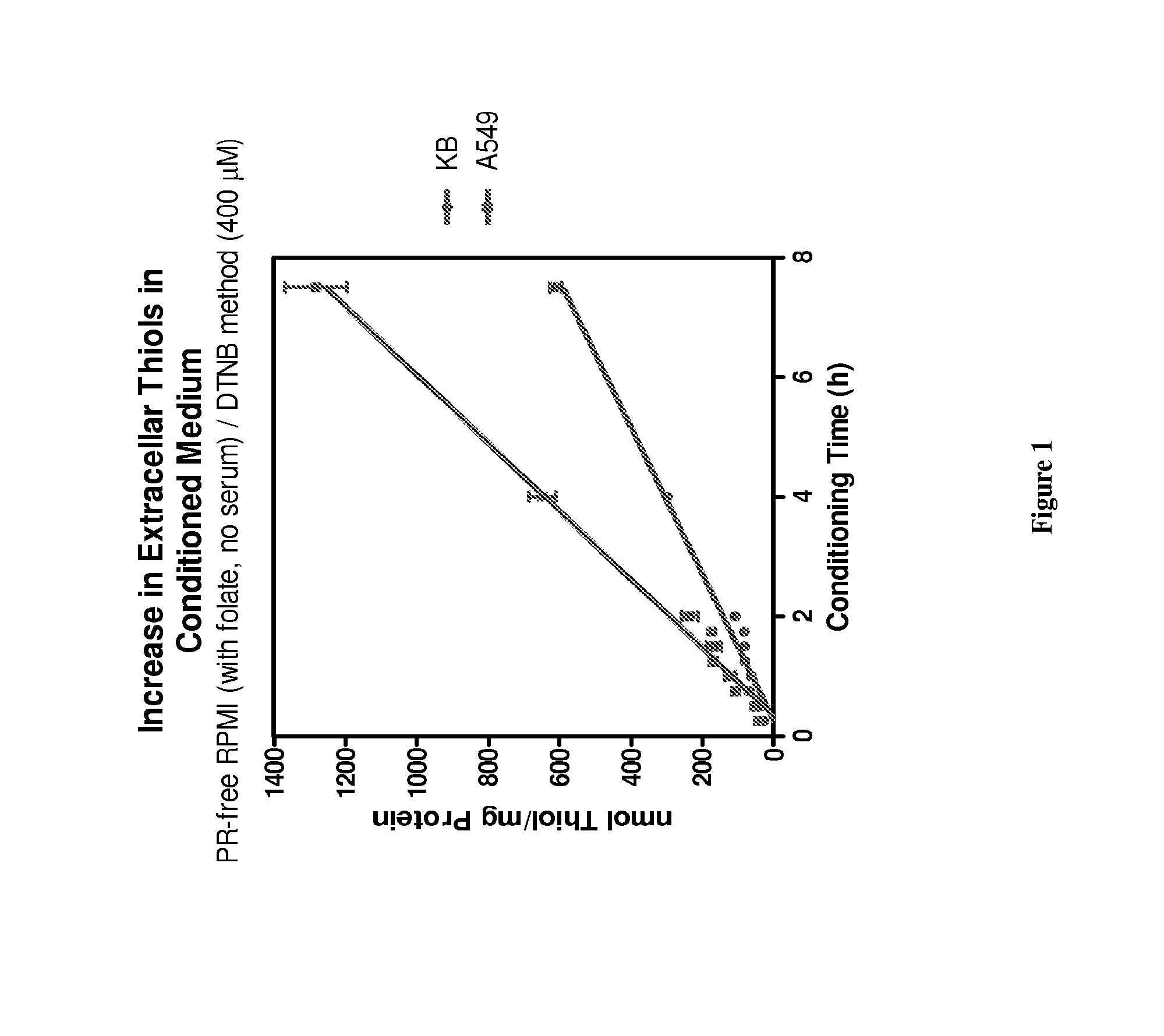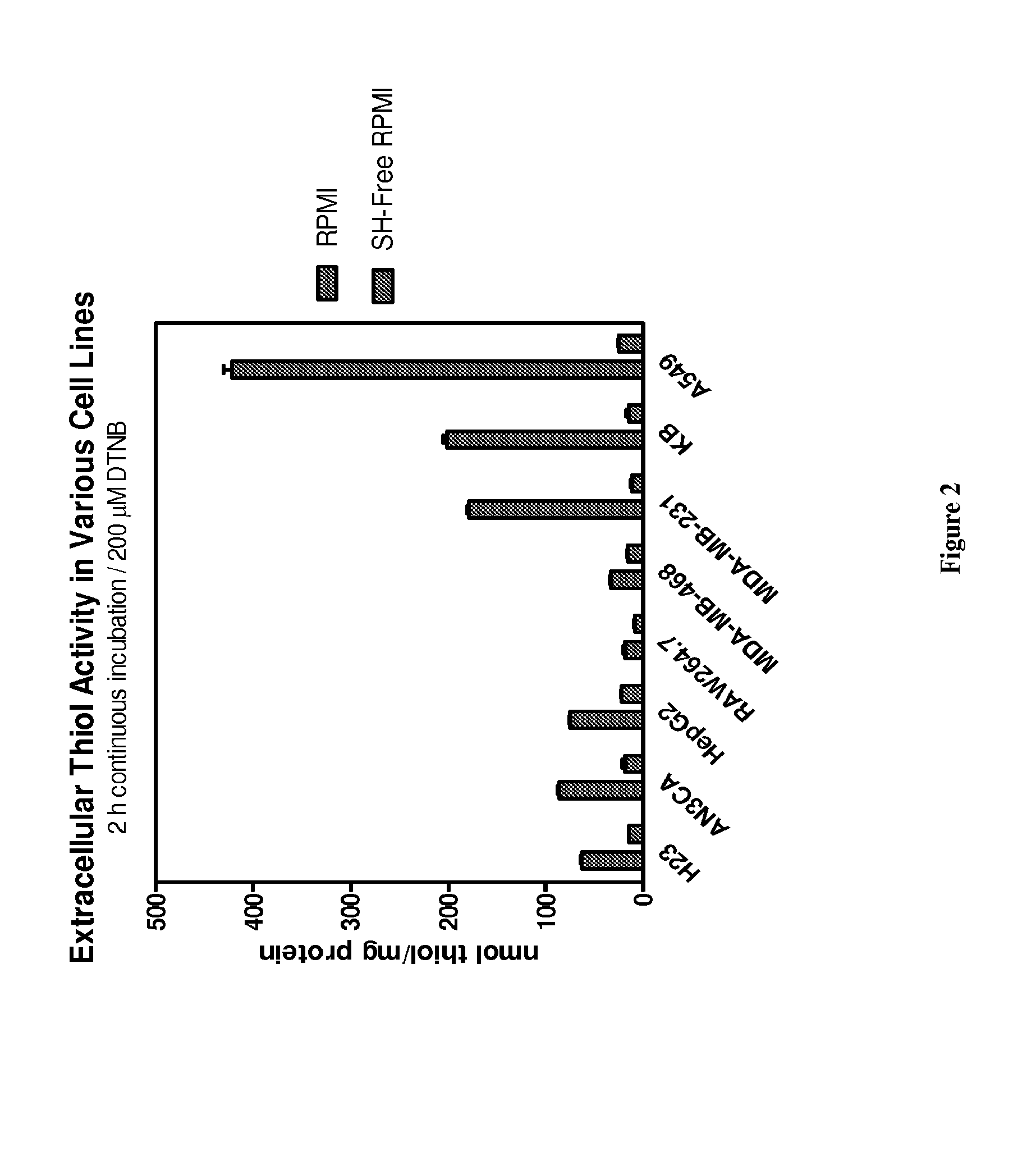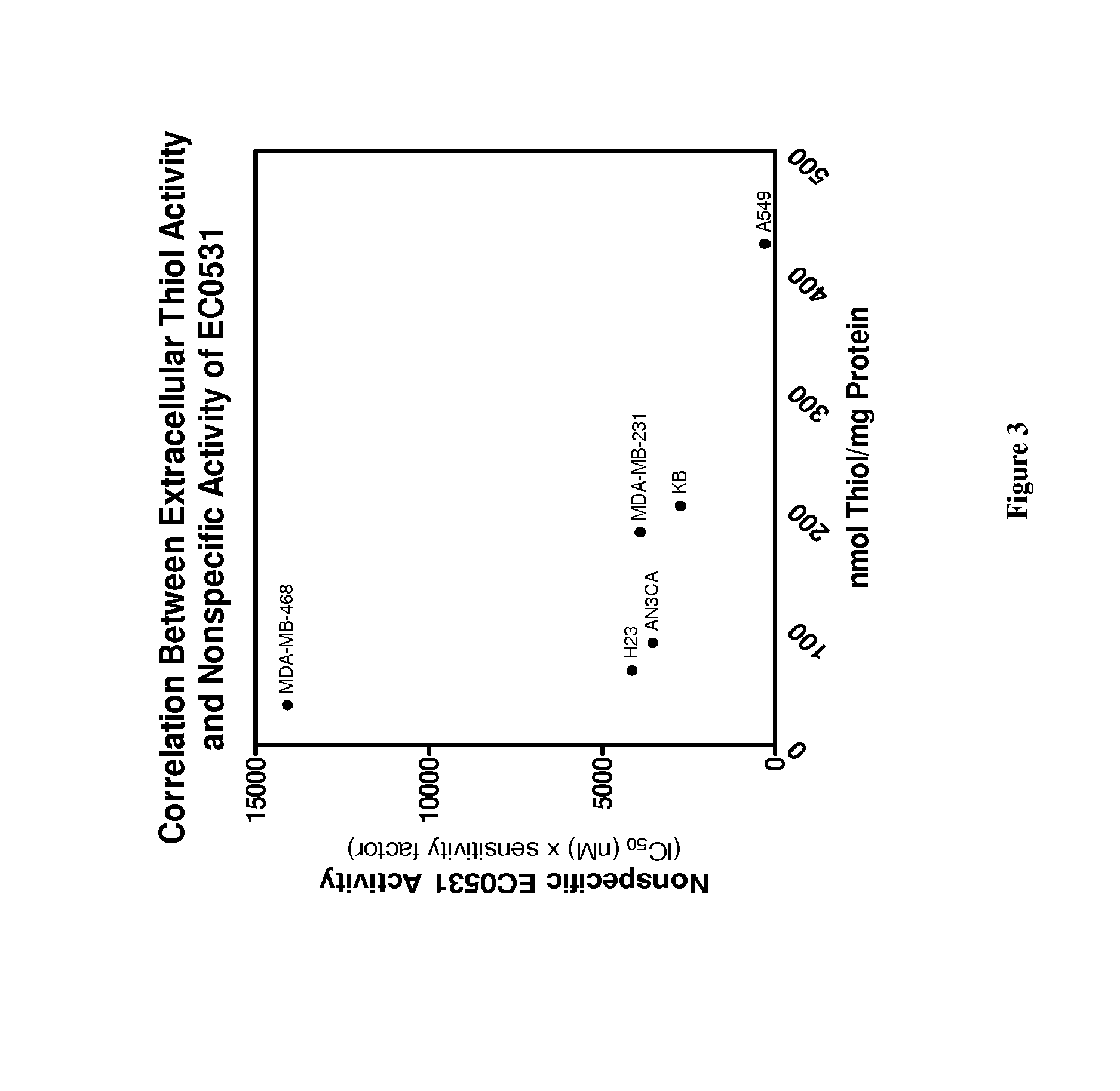Methods for treating cancer using combination therapies
a combination therapy and cancer technology, applied in the direction of instruments, material analysis, organic active ingredients, etc., can solve the problems of drug release and non-specific toxicity, non-specific toxicity
- Summary
- Abstract
- Description
- Claims
- Application Information
AI Technical Summary
Benefits of technology
Problems solved by technology
Method used
Image
Examples
example 1
[0710]The presence of extracellular thiols can undesirably affect the activity and uptake of ligand conjugates. For example, an increase in extracellular thiols in cell culture media can demonstrate such undesired effects in vitro, and an increase in extracellular thiols in interstitial fluids can have undesirable effects in vivo.
[0711]The in vitro extracellular thiol activity can be evaluated in conditioned culture media of the KB cell line and the A549 cell line. Each type of cells was plated in 24-well tissue cultured-treated plates at 1×105 cells per well in folate-deficient RPMI / 10% heat-inactivated fetal bovine serum (FDRPMI / HIFBS; KB cells) or in RPMI medium with folate / 10% HIFBS (RPMI+FA / HIFBS; A549 cells) and the cells were allowed to attach to the plates overnight. The cells were rinsed one time with PBS, pH 7.4, and the time course for thiol activity was initiated by adding 500 μL of RPMI medium without phenol red (PR) or serum to each well. The cells were then incubated ...
example 2
[0713]Furthermore, the degree of extracellular thiol activity varies among different cell lines. Cells from various cell lines (i.e., H23, AN3CA, HepG2, RAW264.7, MDA-MB-468, MDA-MB-231, KB, and A549 cell lines) were each plated in 24-well tissue cultured-treated plates at 2×105 cells per well in FDRPMI / HIFBS (FR+ cells) or in RPMI+FA / HIFBS (FR− cells) and were allowed to attach to the plates overnight. The cells were rinsed one time with PBS, pH 7.4, and then a 200 μM solution of DTNB in PR-free RPMI or in PR-free RPMI without cystine and glutathione (SH-free) was added to each well (n=3). The cells were incubated for 2 h at 37° C., the solutions were removed from the cells, and absorbance was determined at a wavelength of 412 nm. Background absorbance determined from an aliquot of DTNB solution incubated in an empty well of the tissue culture plate was subtracted from each value. Thiol concentrations were calculated based on an extinction coefficient of 14,150 M−1 cm−1. Protein co...
example 3
[0715]In addition, the amount of thiol activity correlates with the non-ligand-specific activity of ligand conjugates. In this example, the non-FR-specific activity of an exemplary folate conjugate (EC0531) was investigated in MDA-MD-468, H23, AN3CA, MDA-MB-231, KB, and A549 cells.
[0716]Extracellular thiol activity was determined using the DTNB method described above. Non-FR-specific activity of EC0531 was determined using a 3H-thymidine incorporation assay. Cells were seeded in 24-well tissue culture-treated plates at 1×105 cells per well and allowed to attach overnight at 37° C. Serial dilutions of EC0531 were prepared in FDRPMI / HIFBS, and each well received 0.5 mL of EC0531 solution. To assess non-FR-targeted activity in FR+ cells, 100 μM FA was included as a competitor along with the drug in the treatment solutions. Cells were incubated for 2 hours in the presence of drug, washed 3 times with media, and then chased in 0.5 mL of FDRPMI / HIFBS (FR+ cells) or RPMI+FA / HIFBS (FR− cell...
PUM
| Property | Measurement | Unit |
|---|---|---|
| weight | aaaaa | aaaaa |
| pH | aaaaa | aaaaa |
| wavelength | aaaaa | aaaaa |
Abstract
Description
Claims
Application Information
 Login to View More
Login to View More - Generate Ideas
- Intellectual Property
- Life Sciences
- Materials
- Tech Scout
- Unparalleled Data Quality
- Higher Quality Content
- 60% Fewer Hallucinations
Browse by: Latest US Patents, China's latest patents, Technical Efficacy Thesaurus, Application Domain, Technology Topic, Popular Technical Reports.
© 2025 PatSnap. All rights reserved.Legal|Privacy policy|Modern Slavery Act Transparency Statement|Sitemap|About US| Contact US: help@patsnap.com



